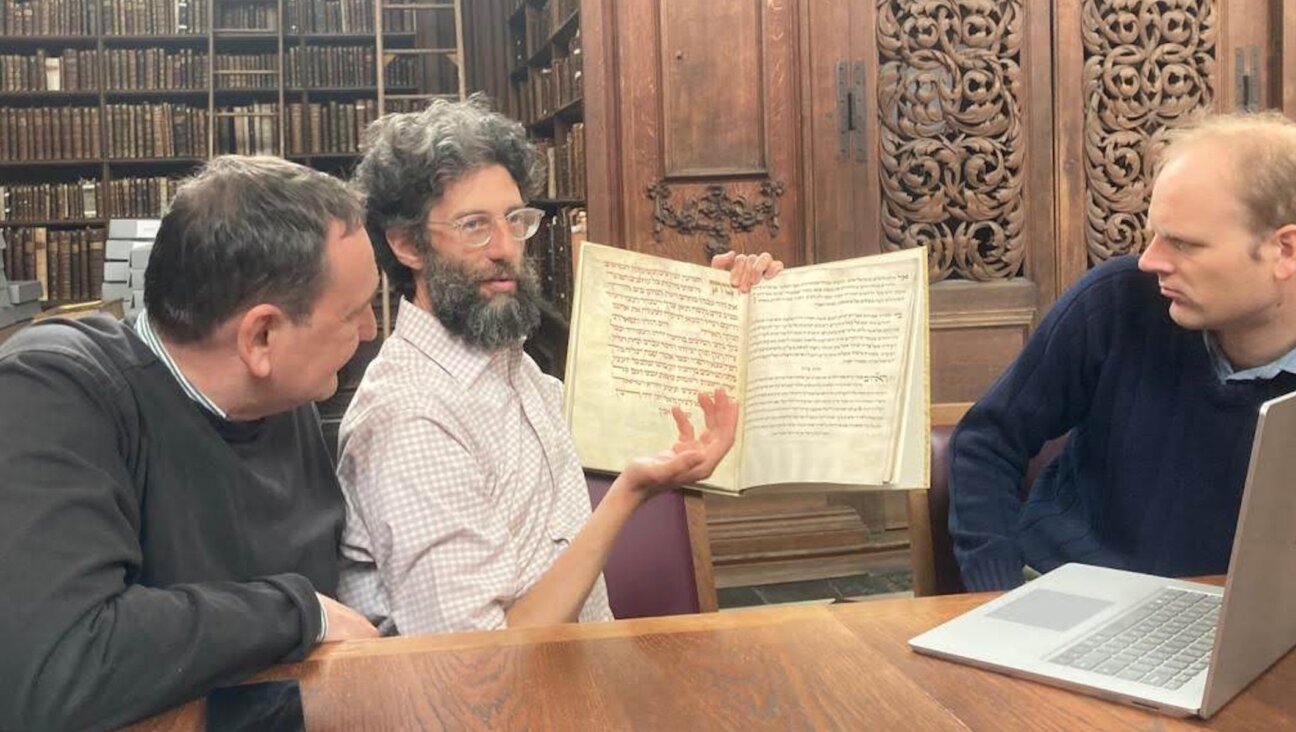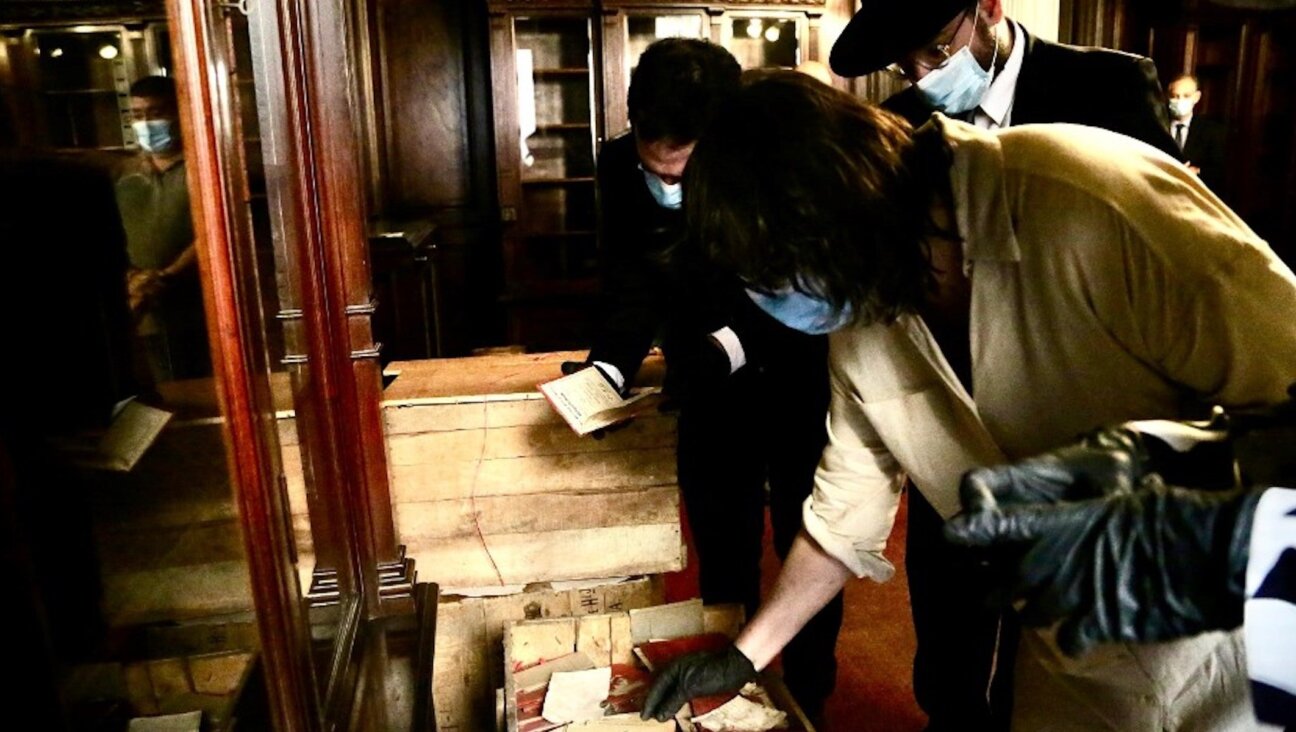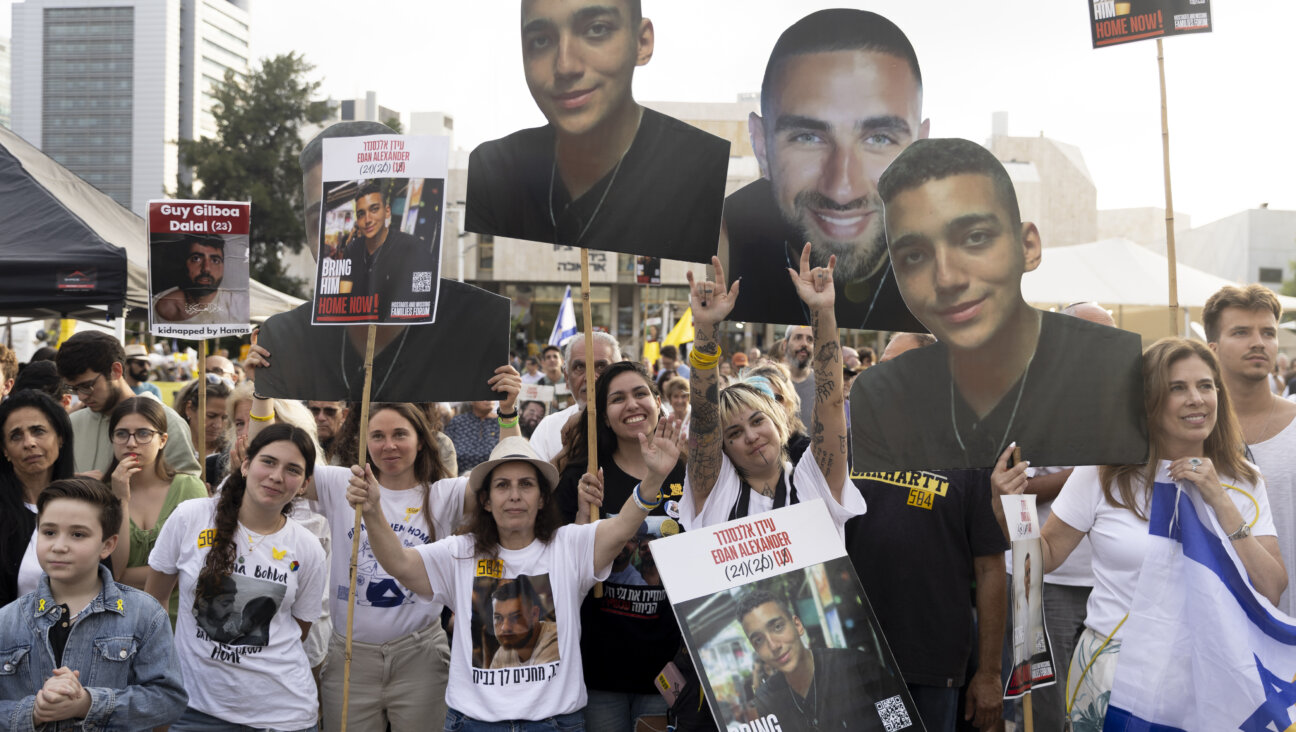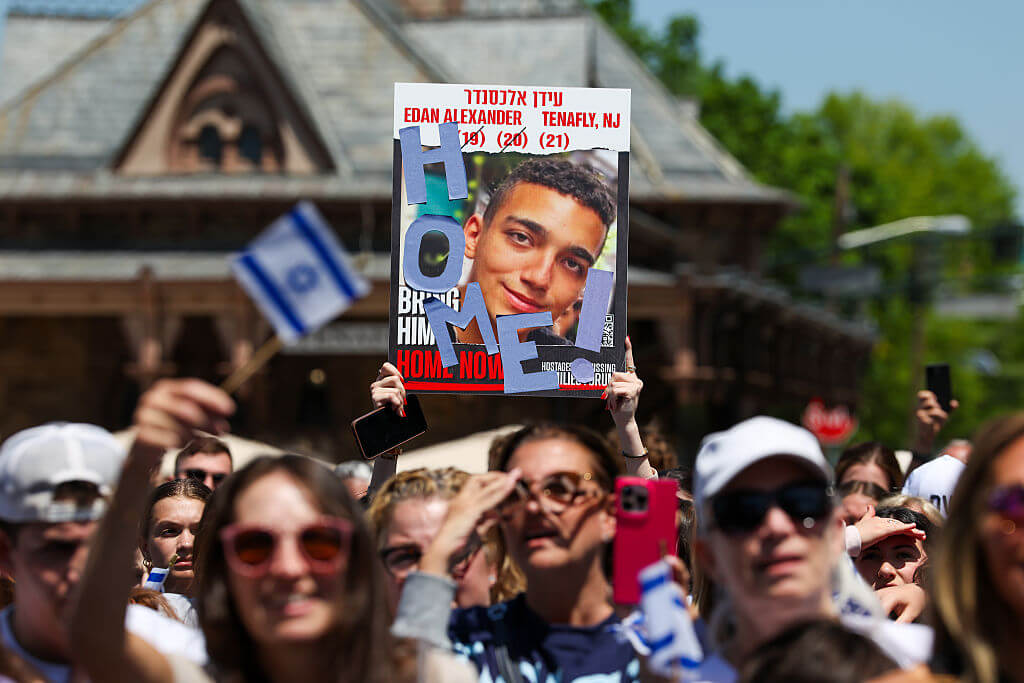Haiti Reporters Notebook
Mounting the buses and trucks near the Jimani border crossing, the young rescue workers from the Dominican Republic’s civil defense corps were excited, even cheerful. They’ve been preparing at their staging point for over a day and now, equipped with helmets, flashlights and face masks they are ready for action.
But as the bus advances down the winding road into Port-au-Prince the devastation revealed itself through the windows and a somber silence replaced the cheerful chatter.
“The key,” explained an Israeli officer who has been on similar rescue missions before, “is to get to work right away. That way you don’t have time to think about what you see.”
Gusmann, a pastor in local church who, like many Haitians who speak English, found himself working as a driver for foreign reporters, said that these events make him think of the Jewish people. They too, Gusmann argued, have been tested by God time and again, but never lost hope.
Hope, however, seemed absent from the streets of Port-au-Prince. And that was one big difference from the experience of reporting on Hurricane Katrina in New Orleans in 2005.
Reporting Hurricane Katrina left this reporter with a distinct sense that a better future would be in hand. Despite the horrors of flooded New Orleans, residents — while visibly disgusted with their government’s incompetence — spoke of rebuilding, of caring for the wounded and getting back on their feet. In Haiti, people seem to be planning for no more than the next minute or hour. In the large square across the collapsed presidential palace, hundreds of families set up tents, crowding with family members and the few belongings they could save from their homes. Asked if he plans to stay or try and leave the city, a father of three replied, “I don’t know” and then added, “What does it matter?”
The monumental pile of rubble that was once the Haitian capital faces rescue and relief workers with a daily dilemma: To whom do you attend first? There is no reliable survey of needs and despite endless efforts by the United Nations to prioritize and coordinate, most teams work based on hunches, general ideas and gut feelings.
This is even more of a dilemma for the Israeli rescue team.
In their camp, a group of Israeli officers gathered around an advanced GPS system trying to locate buildings in which trapped Haitians might still be alive. When asked, the rescuers made clear they are looking for anyone who can be saved, not seeking out Jewish or Israeli survivors. “We’re going to go to wherever there is the best chance to get someone out alive,” one of them said.
But sometimes the choice is not all that clear.
In the collapsed UN compound in Petionville, siblings of a Chilean Jewish woman were awaiting the Israeli rescue team. She had worked in the building for years and is now among dozens of employees presumably buried under the rubble. The family had been in touch with local Jews and was waiting anxiously for the arrival of the Israeli team. And indeed, that was one of the first locations visited by the rescuers. But upon arriving they found there was little they can do. Other teams were already working on the scene. There was little sign of hope. After spending an hour or so in the compound the Israelis moved on.
In their daily meeting, the next morning, they would deliberate going back, speaking of the Jewish family waiting to hear the fate of their loved-one. But in the end, practical consideration took primacy and the team rushed off to another building, where signs of life have been noticed.
At the end of the day they may have made the right choice: that mission led to a live rescue, while at the UN building no more survivors were found.
And just how Jewish can or should a Jewish rescue operation be?
The baby born in a field hospital operated by the Israeli military was named “Israel” and will probably remember the Jewish state every time he’ll be asked about the reason for his unusual name. Baby Israel might also tell his friends of how his picture was spread over newspapers and TV broadcasts thousands of miles away, hours before his own brothers and sisters even got a chance to see him.
Others may remember the flags and Stars of David spread throughout the soccer field that is now an Israeli hospital in which their lives were saved. Or perhaps the calls for Morning Prayer in the makeshift synagogue set up on the ground with a Torah scroll flown in from Israel.
And maybe other Jewish gestures would seem odd, such as the ZAKA volunteer taking limbs amputated in the Israeli hospital in order to provide them with a decent burial, in a city where thousands of bodies are dumped daily into huge landfills. Or the sight of Jewish rescuers teaching a group of Haitians sitting on a pile of debris to sing “Hevainu Shalom Aliechem.”
Contact Nathan Guttman at [email protected].
The Forward is free to read, but it isn’t free to produce

I hope you appreciated this article. Before you go, I’d like to ask you to please support the Forward.
Now more than ever, American Jews need independent news they can trust, with reporting driven by truth, not ideology. We serve you, not any ideological agenda.
At a time when other newsrooms are closing or cutting back, the Forward has removed its paywall and invested additional resources to report on the ground from Israel and around the U.S. on the impact of the war, rising antisemitism and polarized discourse.
This is a great time to support independent Jewish journalism you rely on. Make a gift today!
— Rachel Fishman Feddersen, Publisher and CEO
Support our mission to tell the Jewish story fully and fairly.
Most Popular
- 1

Fast Forward Ye debuts ‘Heil Hitler’ music video that includes a sample of a Hitler speech
- 2

Opinion It looks like Israel totally underestimated Trump
- 3

Culture Is Pope Leo Jewish? Ask his distant cousins — like me
- 4

Fast Forward Student suspended for ‘F— the Jews’ video defends himself on antisemitic podcast
In Case You Missed It
-

Fast Forward For the first time since Henry VIII created the role, a Jew will helm Hebrew studies at Cambridge
-

Fast Forward Argentine Supreme Court discovers over 80 boxes of forgotten Nazi documents
-

News In Edan Alexander’s hometown in New Jersey, months of fear and anguish give way to joy and relief
-

Fast Forward What’s next for suspended student who posted ‘F— the Jews’ video? An alt-right media tour
-
Shop the Forward Store
100% of profits support our journalism
Republish This Story
Please read before republishing
We’re happy to make this story available to republish for free, unless it originated with JTA, Haaretz or another publication (as indicated on the article) and as long as you follow our guidelines.
You must comply with the following:
- Credit the Forward
- Retain our pixel
- Preserve our canonical link in Google search
- Add a noindex tag in Google search
See our full guidelines for more information, and this guide for detail about canonical URLs.
To republish, copy the HTML by clicking on the yellow button to the right; it includes our tracking pixel, all paragraph styles and hyperlinks, the author byline and credit to the Forward. It does not include images; to avoid copyright violations, you must add them manually, following our guidelines. Please email us at [email protected], subject line “republish,” with any questions or to let us know what stories you’re picking up.













